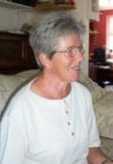What Really Happens in Those Bell Correlation Experiments?
Year: 2000
Keywords: Bell's Theorem, EPR, Correlation, Experiments
Do any real experiments demonstrate "nonlocal" correlations? As I shall show, there are other possible explanations for the observations, and these involve nothing more than classical ideas about the nature of light, shared information from the source, and realistic hypotheses as to how the apparatus works. The basic classical explanation has been known from the start. The natural modifications, though, needed to model real experiments, are considerably less well known. The most important of these is associated with the "detection loophole", which is a major weakness of the variants of Bell's test most commonly used. Editors, referees and others have convinced themselves that this and other loopholes are unimportant, or that an experiment that blocks just one of them demonstrates a weird quantum effect. This last assumption is illogical, and the whole argument is effectively circular. The loopholes may indeed be unimportant if quantum theory is correct and the "photon" is indivisible, but this is what is under test!
The net result of my studies is that there is no evidence here of faster-than-light effects.


